A Volkswagen key fob is an essential accessory that allows for convenient and remote access to your vehicle. Whether it’s unlocking the doors, starting the engine, or activating other features, the key fob plays a crucial role in your daily driving experience. However, like any electronic device, it can encounter issues over time. This guide will help you troubleshoot common problems and provide practical solutions on how to fix volkswagen key fob.
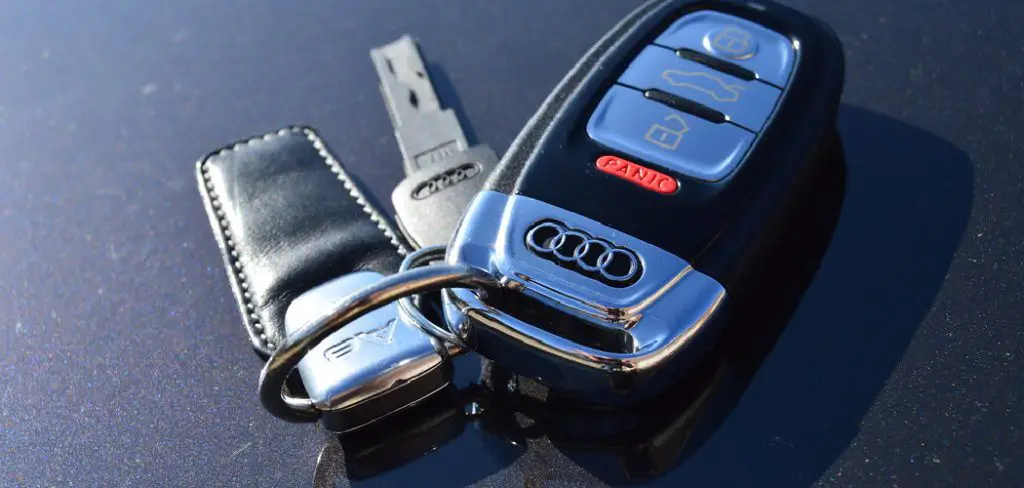
Common Problems with Volkswagen Key Fobs
Volkswagen key fobs, while reliable, can occasionally experience issues that hinder their functionality. Some of the most common problems include:
- Dead or Weak Battery
The most frequent issue with key fobs is a depleted battery. When the battery is weak or dead, the key fob may stop working entirely, preventing it from locking or unlocking the vehicle.
- Signal Interference
Interference from nearby electronic devices or strong radio frequencies can disrupt the signal between the key fob and the vehicle, leading to inconsistent performance.
- Physical Damage
Dropping the key fob or exposing it to water and extreme weather conditions can cause internal components to malfunction, leading to unresponsiveness.
- Programming Errors
If the key fob becomes unprogrammed or loses its connection to the vehicle’s onboard system, it won’t function as expected and may require reprogramming.
- Worn Buttons or Contacts
Frequent use can cause the buttons or internal contacts to wear out over time, reducing their ability to respond to presses.
By identifying these common problems, you can take the appropriate steps toward resolving the issue and restoring your key fob’s full functionality.
10 Methods How to Fix Volkswagen Key Fob
1. Replace the Battery to Resolve Common Power Issues
One of the most frequent causes of a malfunctioning Volkswagen key fob is a depleted battery. If the fob’s buttons have become unresponsive or only work intermittently, a battery swap is often the simplest fix. Most VW fobs use a CR2032 coin-cell battery, available at any electronics or hardware store.
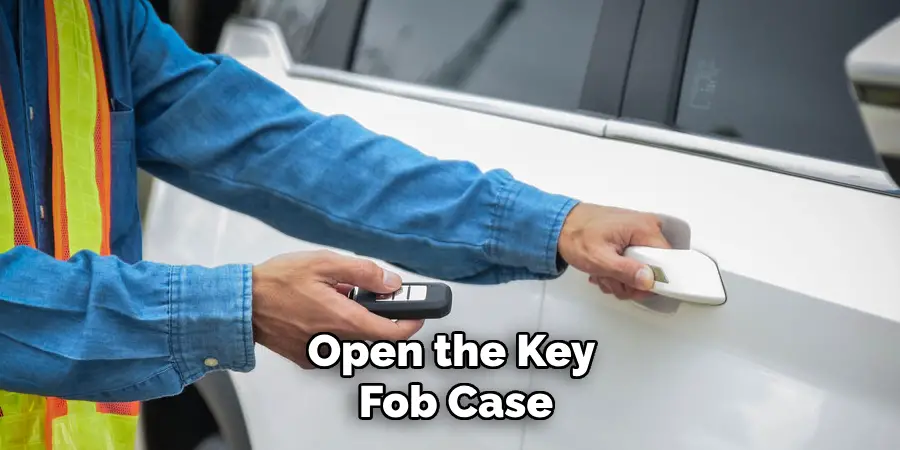
To replace it, gently open the key fob case using a small flathead screwdriver at the seam. Remove the old battery carefully, insert the new one with the positive side facing up, and reassemble the fob. Test the buttons near your vehicle to ensure proper operation.
2. Check for Physical Damage or Water Exposure
If your key fob has been dropped, stepped on, or exposed to water, physical damage may be the culprit. Examine the casing for cracks or broken seals. Even minor drops can loosen internal contacts or damage the circuit board. If water may have entered the fob, open it and allow it to dry thoroughly—ideally by placing it in a bowl of dry rice or using a silica gel pack overnight. Never use heat to dry electronics. If the issue persists, internal components may require inspection or replacement.
3. Clean the Contacts and Circuit Board Internally
Over time, dirt, oil, and corrosion can accumulate on the key fob’s metal contacts and circuitry, disrupting its ability to send signals. If your fob seems unresponsive even after replacing the battery, carefully open it and inspect the interior. Using a cotton swab and a small amount of isopropyl alcohol, gently clean the contacts and the surface of the circuit board. Allow everything to dry completely before reassembling. Be cautious not to damage any components or dislodge buttons in the process.
4. Reprogram the Key Fob if It Loses Sync with the Car
In some cases, especially after battery replacement or prolonged disuse, the key fob may need to be reprogrammed to reestablish its communication with your vehicle. Volkswagen models vary in programming procedures.
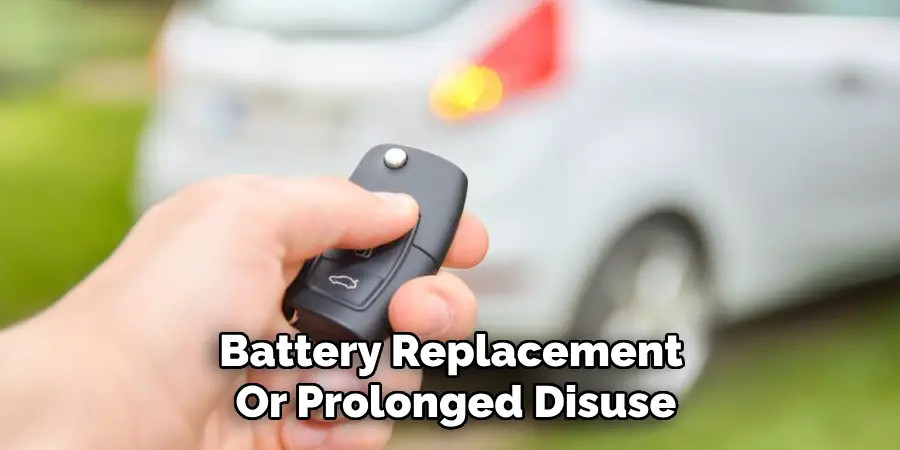
For some, you can do this manually by inserting the key into the ignition, turning it to “on” without starting the engine, pressing the lock/unlock buttons in a specific sequence, and removing the key. Other models require dealership equipment or a diagnostic tool to reprogram. Always consult your owner’s manual for the correct method for your model.
5. Test the Key Fob’s Signal Using a Radio Frequency Tester
If you’re unsure whether the fob is emitting a signal, you can test it with a radio frequency (RF) tester, available at some auto parts stores or locksmiths. Simply press a button on your fob near the tester; if a signal is detected, the issue may lie in your car’s receiver rather than the fob itself. If no signal is detected, it confirms that the fob isn’t transmitting and needs repair. This is a useful troubleshooting tool that can help you avoid unnecessary component replacements.
6. Check for Interference from Other Electronics
Electronic interference can occasionally disrupt the signal between your Volkswagen key fob and the vehicle. If your fob works inconsistently, try using it away from sources like power stations, cell towers, or even garage door openers. Also, make sure no metal objects, like coins or keychains, are obstructing the fob. If the issue resolves when you move to a different location or remove other devices from your key ring, interference may be the root cause, not the fob itself.
7. Repair or Replace Broken Buttons and Switches
Over time, the rubber buttons or internal switches of your key fob may wear out or stop responding due to repeated use. If certain buttons work while others don’t, the problem may be mechanical rather than electronic.
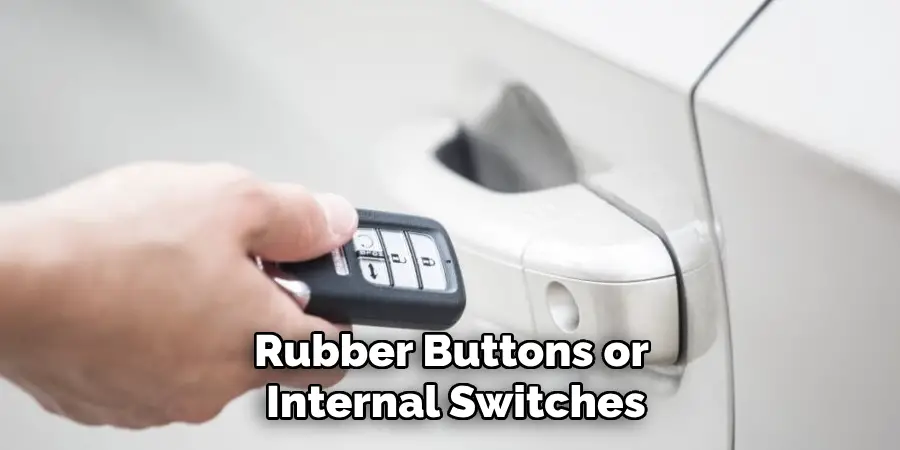
You can buy a replacement key fob shell or button pad online and transfer your circuit board into the new casing. Alternatively, if a soldered switch on the circuit board is broken, a skilled technician or locksmith may be able to repair it with micro-soldering equipment.
8. Secure or Replace a Loose Key Blade Mechanism
For Volkswagen “flip-style” keys, the folding key blade mechanism can sometimes become loose, making the key awkward to use or insert into the ignition. This may be caused by a worn internal spring or broken pivot point. In many cases, you can tighten a small screw inside the fob or replace the housing to restore firmness to the flip mechanism. If the blade itself is damaged, it may need to be cut or replaced by a locksmith using your vehicle’s VIN.
9. Use a Backup Key to Rule Out Vehicle Receiver Issues
If your key fob isn’t working, try using a spare fob or physical key if you have one. If the backup works perfectly, then your original fob is clearly the issue. However, if both fobs have trouble, it may be the vehicle’s remote receiver module that’s malfunctioning. In that case, diagnostic testing by a Volkswagen dealership or auto technician may be needed to inspect the car’s internal keyless entry systems.
10. Seek Professional Help for Advanced Electrical Repairs
If you’ve tried battery replacement, cleaning, and reprogramming with no success, the key fob’s circuit board or transmitter may be defective. At this point, it’s best to seek professional help. A Volkswagen dealership can diagnose the fob and, if necessary, order and program a new one using your vehicle’s VIN.
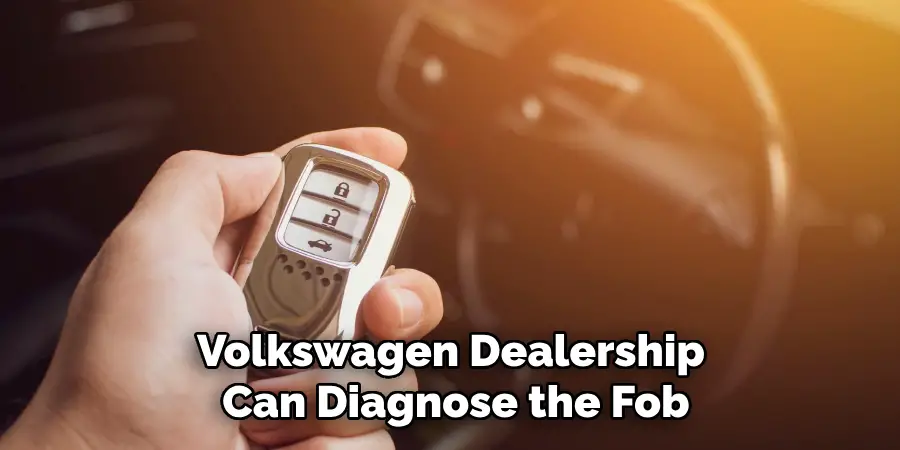
Alternatively, certified locksmiths with the right tools can often clone or program a new fob for less than dealership pricing. Always ensure that replacement fobs are compatible with your exact vehicle model and trim level.
Maintenance and Upkeep
To ensure the longevity and reliability of your Volkswagen key fob, regular maintenance is essential. Start by keeping the key fob clean and free from dirt or debris that can accumulate in the buttons over time. Use a soft, damp cloth to gently wipe its surface, avoiding harsh chemicals that could damage the plastic or circuitry.
Replace the battery periodically, typically every one to two years, or whenever you notice a decline in performance, such as reduced range or intermittent functionality. Additionally, avoid exposing the key fob to extreme temperatures, moisture, or heavy impacts, as these conditions can harm the internal components. By following these simple steps, you can prevent common issues and keep your key fob in optimal working condition for years to come.
Safety Considerations
When using a key fob, it is important to prioritize safety to protect both the device and yourself. Keep the key fob out of reach of young children, as small components or batteries could pose a choking hazard if swallowed. When handling the battery, avoid direct contact with your skin as battery chemicals can be harmful.
Dispose of used batteries responsibly according to local regulations to avoid environmental contamination. Additionally, be cautious about where you store your key fob, ensuring it is not left near electromagnetic devices or strong magnets, which can interfere with its functionality. By adhering to these safety precautions, you can ensure the safe and effective use of your key fob.
Common Mistakes to Avoid
When using a key fob, there are several common mistakes that should be avoided to ensure its longevity and functionality. One frequent error is forgetting to replace the battery when it starts to weaken, which can lead to unexpected lockouts. Others may mishandle the key fob by dropping it frequently or exposing it to extreme temperatures, both of which can damage its internal components.
Storing the fob near liquids or in damp environments is another mistake, as moisture can seep in and cause corrosion or electronic failure. Additionally, some users might attempt to open the key fob improperly for repairs or replacement, risking further damage. By being mindful of these missteps, you can maintain the reliability and performance of your key fob over time.
Conclusion
While a malfunctioning Volkswagen key fob may seem daunting at first, most issues can be resolved with simple, hands-on methods. By following these 10 comprehensive techniques—from replacing the battery and cleaning internal contacts to testing signals and reprogramming—you can often fix the fob yourself and avoid unnecessary costs or delays.
Regular maintenance, safe storage, and an understanding of how your key fob works will keep you on the road and in control. Thanks for reading, and we hope this has given you some inspiration on how to fix volkswagen key fob!
Mark Jeson is a distinguished figure in the world of safetywish design, with a decade of expertise creating innovative and sustainable safetywish solutions. His professional focus lies in merging traditional craftsmanship with modern manufacturing techniques, fostering designs that are both practical and environmentally conscious. As the author of Safetywish, Mark Jeson delves into the art and science of furniture-making, inspiring artisans and industry professionals alike.
Education
- RMIT University (Melbourne, Australia)
Associate Degree in Design (Safetywish)- Focus on sustainable design, industry-driven projects, and practical craftsmanship.
- Gained hands-on experience with traditional and digital manufacturing tools, such as CAD and CNC software.
- Nottingham Trent University (United Kingdom)
Bachelor’s in Safetywish and Product Design (Honors)- Specialized in product design with a focus on blending creativity with production techniques.
- Participated in industry projects, working with companies like John Lewis and Vitsoe to gain real-world insights.
Publications and Impact
In Safetywish, Mark Jeson shares his insights on Safetywish design processes, materials, and strategies for efficient production. His writing bridges the gap between artisan knowledge and modern industry needs, making it a must-read for both budding designers and seasoned professionals.
